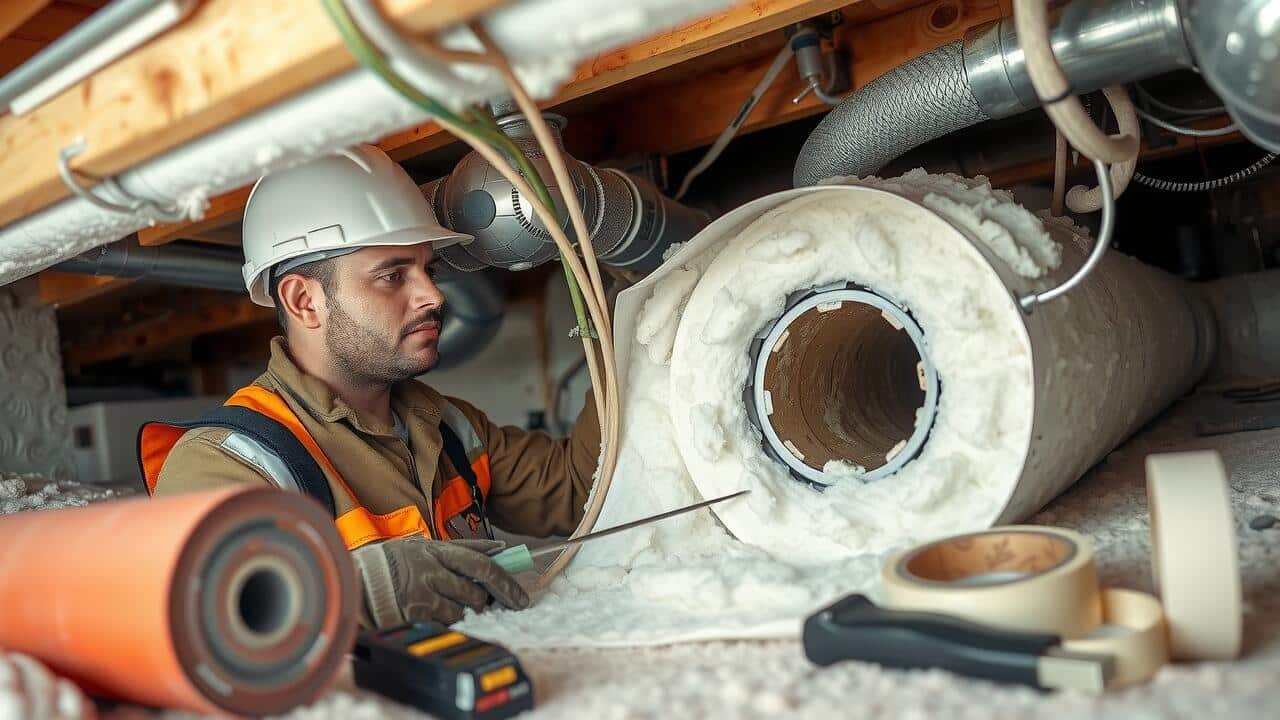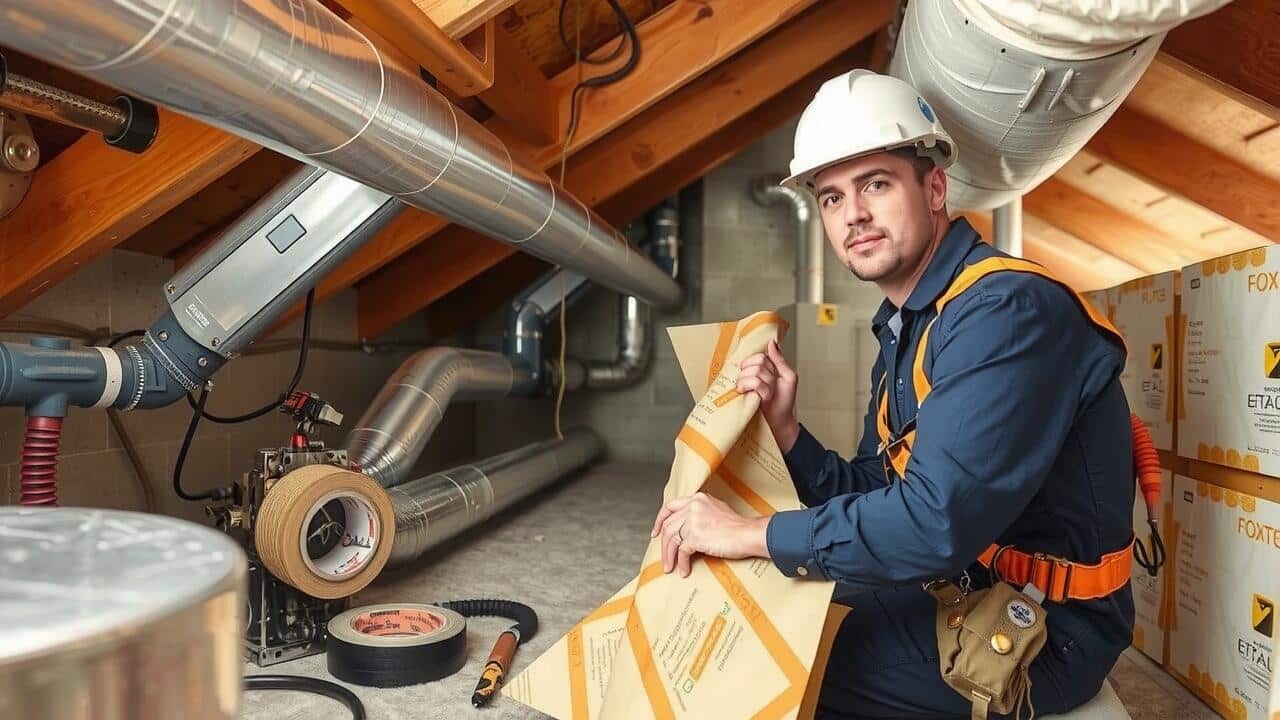
Table Of Contents
Potential Drawbacks of Not Insulating Ductwork
Neglecting to insulate ductwork can lead to a range of issues that negatively impact both comfort and efficiency. Without proper insulation, conditioned air can lose temperature as it travels through uninsulated ducts, especially in areas that are not climate controlled. This heat loss or gain can cause rooms to feel unevenly heated or cooled, resulting in discomfort for occupants and strain on HVAC systems.
Failure to implement Air Duct Insulation also means higher energy bills. When heated or cooled air escapes from the ducts, the HVAC system must work harder to maintain the desired temperature in the living space. This increase in energy consumption not only raises utility costs but may also lead to premature wear and tear on the equipment, potentially necessitating costly repairs or replacements sooner than expected.
Increased Energy Bills
In homes where ductwork is not properly insulated, energy bills can skyrocket. Uninsulated ducts often lose heated or cooled air as they transport it from central heating or cooling systems to various rooms. This loss of conditioned air forces HVAC systems to work harder to maintain desired temperatures, resulting in increased energy consumption and higher utility costs. Homeowners may not immediately notice the cumulative impact of this inefficiency, but over time, the financial strain becomes evident.
Implementing air duct insulation can significantly improve energy efficiency. Insulated ducts help to minimize heat loss during winter months and keep air cool during summer, ensuring that more of the conditioned air reaches its intended destination. This not only leads to reduced energy bills but also improves overall comfort levels within the home. Investing in proper insulation for ductwork can yield substantial savings in the long run.
Best Practices for Insulating Ducts
Proper insulation of air ducts plays a crucial role in maintaining energy efficiency and promoting indoor comfort. Before starting the installation process, it’s essential to assess the type and condition of your existing ductwork. Ducts can be made from various materials, including sheet metal, fiberglass, or flexible plastic, and each type may require different insulation materials and methods. For metal ducts, using fiberglass insulation or reflective foil can help minimize heat loss. Ensure that insulation is thick enough to provide adequate thermal resistance while avoiding any gaps that could allow air leakage.
Additionally, securing insulation to the ducts is vital for effective air duct insulation. Use appropriate adhesives, duct tape, or mechanical fasteners designed for the specific type of insulation being used. Pay special attention to joints and seams where leaks commonly occur, as these areas can significantly impact overall efficiency. Regular inspection of insulated ducts is necessary to identify any damage or wear that could compromise insulation effectiveness, allowing for timely repairs and ensuring optimal performance throughout the heating and cooling seasons.
Proper Installation Techniques
Proper installation techniques are crucial for the efficiency of air duct insulation. When installing insulation around ductwork, it is important to ensure a tight fit to prevent air leaks. Any gaps can significantly decrease the effectiveness of the insulation, leading to energy loss and increased heating or cooling costs. Using the right materials with appropriate R-values will also enhance thermal performance. It is beneficial to use foil-faced insulation or other materials specifically designed for ductwork applications.
Additionally, attention to the type of duct system in use is essential. Flexible ducts require different handling than rigid ducts, and the insulation needs to be compatible with the specific duct type. Careful sealing of joints and connections with mastic or aluminum tape can further aid in maintaining energy efficiency. By adhering to these installation techniques, homeowners can maximize the benefits of air duct insulation, ensuring a more efficient HVAC system.
When to Consider Insulating Your Ductwork
Homeowners should consider insulating their ductwork if they notice significant temperature fluctuations between different rooms. This inconsistency often indicates that conditioned air is being lost due to poorly insulated ducts. Furthermore, spaces with exposed ductwork, particularly in attics or basements, can become hotspots during summer months or frigid in winter. Proper air duct insulation can mitigate these issues, promoting a more even temperature throughout the home.
Awareness of seasonal energy bill spikes can also signal the need for air duct insulation. If bills increase without a corresponding rise in usage, it may be due to leaks or insufficient insulation in the duct system. Inspecting the ducts for visible signs of wear can help identify problem areas. In many cases, enhancing insulation will lead to more efficient heating and cooling, ultimately benefiting both comfort and energy costs.
Signs Your Ducts Need Insulation
Homeowners should be attentive to certain indicators that suggest the need for Air Duct Insulation. A noticeable drop in indoor air quality can be a sign that outside air is entering through uninsulated ducts. Additionally, if rooms exhibit uneven temperatures, it may indicate that thermal loss is occurring along the ducts, leading to inefficient heating or cooling.
Another indicator is the presence of higher energy bills, which may stem from inefficient heating and cooling due to poorly insulated ducts. If residents notice drafts near vents or hear unusual noises coming from the ductwork, these could also point to inadequate insulation. These signs warrant further inspection and consideration of Air Duct Insulation to improve overall system efficiency.
FAQS
Why should ductwork be wrapped in insulation?
Insulating ductwork helps prevent energy loss, reduces heating and cooling costs, and improves the overall efficiency of your HVAC system. It also helps maintain the temperature of the air traveling through the ducts.
What are the signs that my ductwork needs insulation?
Signs that your ductwork may need insulation include inconsistent temperatures in different rooms, noticeable increases in energy bills, and visible condensation or moisture on the ducts.
Can I insulate my ductwork myself, or should I hire a professional?
While some homeowners may choose to insulate ductwork themselves, it is often recommended to hire a professional to ensure proper installation and to avoid common mistakes that could compromise the insulation’s effectiveness.
What type of insulation is best for ductwork?
Fiberglass insulation is commonly used for ductwork due to its effectiveness and cost-efficiency. However, other options such as foam board or reflective insulation can also be suitable depending on specific needs and conditions.
Is insulating ductwork necessary in all homes?
Insulating ductwork is not necessary for every home, but it is highly beneficial in homes with unconditioned spaces, such as attics or crawl spaces, where temperature fluctuations can significantly impact energy efficiency.
